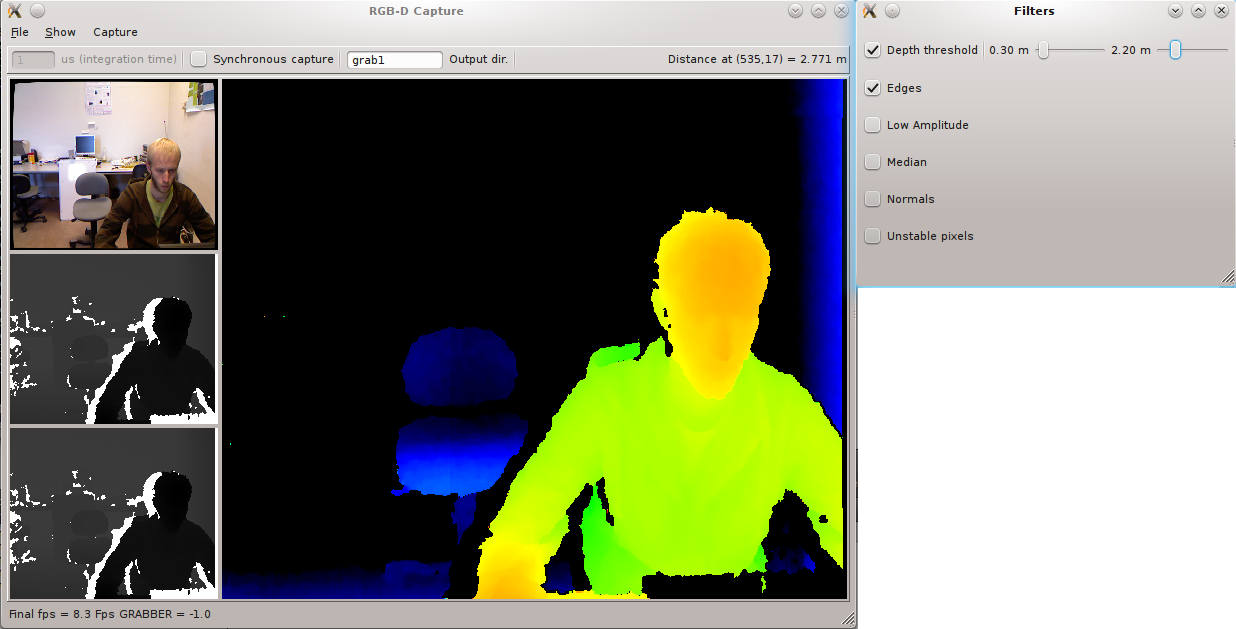Introduction Optical systems are imperfect, that is why any camera prone to produce geometric distortions. There are Barrel and Pincushion distortions. In addiction, a mixture of both distortion types, sometimes referred to as mustache distortion. Generally speaking, distortion is a deviation from rectilinear projection, hence, raw distorted images could not be used for photogrammetry. Camera calibration In some cases the camera vendor provides the transformation matrix for undistortion.
However, if it is not available, one can calculate all necessary coefficients with to be able to perform such undistortional transformation. OpenCV takes into account both the radial and tangential factors. To measure distortion of an optical systems it is possible to use photos of real world object with well-known shape. In the case, classical black-white chessboard pattern was used. It can be and printed on a well-sized paper.


Else if ( val == ' chessboard ') pattern = CHESSBOARD; else: return fprintf ( stderr, ' Invalid pattern type: must be chessboard or circles n '), - 1;} squareSize = parser. Get (' s '); nframes = parser. Get (' n '); aspectRatio = parser. Get (' a '); delay = parser. Get (' d '); writePoints = parser. Has (' op '); writeExtrinsics = parser. Has (' oe '). Opencv - Open Source Computer Vision Library. Opencv / opencv. Issues 1,298. Pattern pattern = CHESSBOARD; cv::CommandLineParser parser. Subject: Re: [opencv] Improved chessboard detection. Oliver, Stefano.
It is really important to attach the test sheet on a flat surface for proper camera calibration. It is enough to have 10-20 images for calibration. Corners could be automatically found with the following command: cv2. FindChessboardCorners ( img, ( Nx_cor, Ny_cor ), None ) Resulted code for a bunch of calibration images: import cv2 import glob import numpy as np Nx_cor = 9 # Number of corners to find Ny_cor = 6 # Prepare object points, like (0,0,0), (1,0,0), (2,0,0).,(6,5,0) objp = np. Zeros (( Nx_cor * Ny_cor, 3 ), np.
Float32 ) objp [:,: 2 ] = np. Mgrid [ 0: Nx_cor, 0: Ny_cor ]. Reshape ( - 1, 2 ) objpoints = [] # 3d points in real world space imgpoints = [] # 2d points in image plane. Images = glob. Glob ( 'path/to/calibration/images' ) # Make a list of paths to calibration images # Step through the list and search for chessboard corners corners_not_found = [] # Calibration images in which OpenCV failed to find corners for idx, fname in enumerate ( images ): img = cv2. Imread ( fname ) gray = cv2. CvtColor ( img, cv2.
COLOR_BGR2GRAY ) # Conver to grayscale ret, corners = cv2. FindChessboardCorners ( gray, ( Nx_cor, Ny_cor ), None ) # Find the corners # If found, add object points, image points if ret == True: objpoints. Append ( objp ) imgpoints. Append ( corners ) else: corners_not_found.
Mifare Crack. Append ( fname ) If it is needed, found corners can be visualized with an OpenCV function like this: cv2. DrawChessboardCorners ( img, ( Nx_cor, Ny_cor ), corners, ret ) Given the object points (an ideal model of desired points on a surface) and the image points (found chessboard corners), it is possible to calculate all calibration coefficients for the undistortion process: img = cv2.
Orchestra Baobab Made In Dakar Rar File on this page. Imread ( 'test/image' ) img_size = ( img. Shape [ 1 ], img. Shape [ 0 ]) # Do camera calibration given object points and image points ret, mtx, dist, rvecs, tvecs = cv2. CalibrateCamera ( objpoints, imgpoints, img_size, None, None ) Image undistortion OpenCV provides a useful function: cv2. Undistort ( img, mtx, dist, None, mtx ) Here is an example of its use: The code was used in the Lane Lines Detection.

